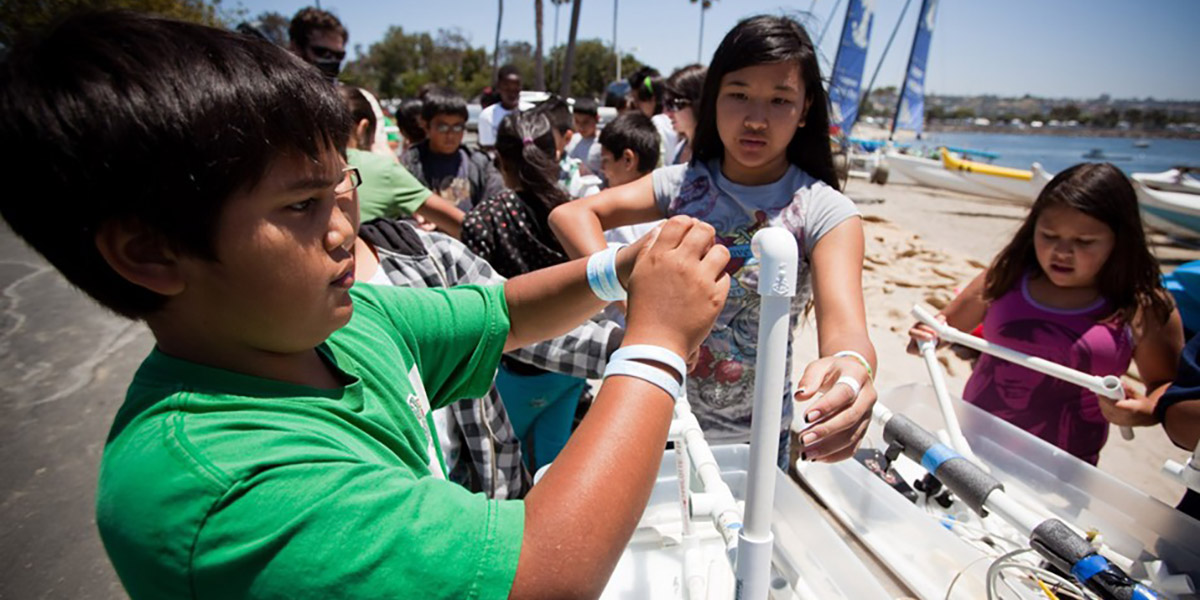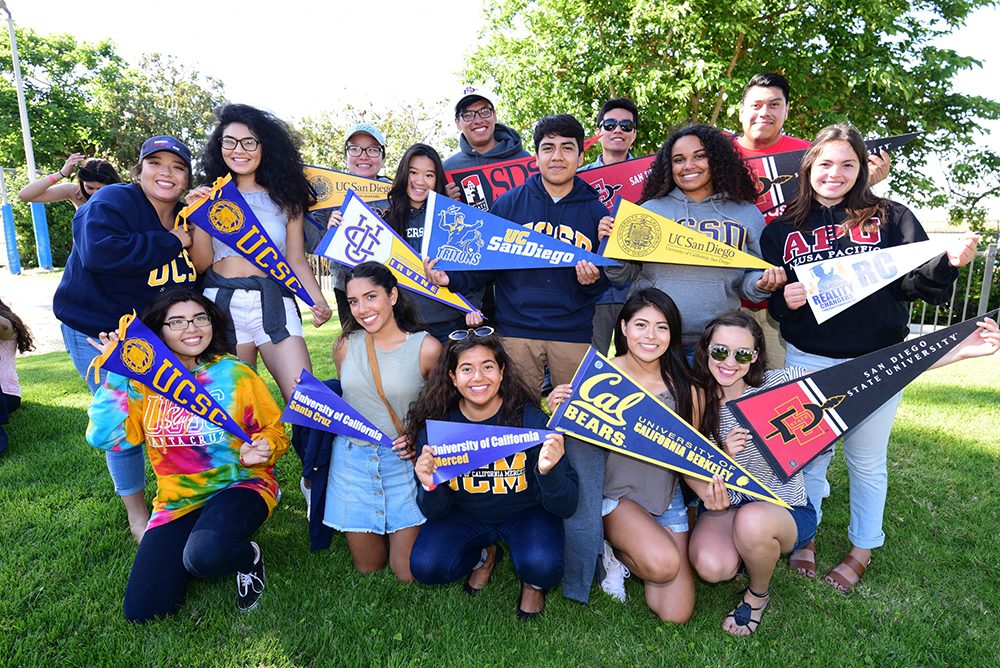Navigating the world of philanthropy can be complex, but donor-advised funds (DAFs) offer a flexible way for donors to manage their charitable giving.
With San Diego’s vibrant community and numerous charitable causes, understanding DAFs can enhance how individuals and families contribute to their community. Here, we answer 12 frequently asked questions about donor-advised funds to help you make informed decisions.
1. What is a donor-advised fund (DAF)?
A donor-advised fund is a philanthropic vehicle administered by a public charity. At San Diego Foundation (SDF), we often refer to a DAF as a charitable giving account for you and your family.
It allows you to make a charitable contribution of cash, stock, or other assets, receive an immediate tax benefit, and then recommend grants from your fund over time. The charity or bank that manages your fund often provides administrative and investment services.
At SDF, we provide administrative support and decades of community expertise to help you maximize your charitable giving and respond to critical, emerging needs in the region.
Download the San Diego Donor’s Guide to Donor-Advised Funds
2. Is a DAF the same as an IRA?
No, a DAF is not the same as an Individual Retirement Account (IRA). While both offer tax advantages, an IRA is designed for personal retirement savings, whereas a DAF is solely for philanthropic purposes. Funds contributed to a DAF are irrevocably dedicated to charity, unlike IRA funds, which are meant for the account holder’s future financial security.
You can, however, set up a planned gift of an IRA to a donor-advised fund. The gift is not realized until after the donor passes away.
3. How does a DAF work?
After you make a tax-deductible contribution of cash, securities or other assets to a DAF, the sponsoring 501(c)(3) charity or bank invests your charitable assets. The returns on these investments grow tax-free. Sponsoring organizations, such as community foundations and commercial banks, typically offer various investment options for your charitable assets based on your projected grantmaking time horizon. At SDF, we offer seven investment portfolios, including five non-endowment portfolios and two endowment portfolios, for donors to choose from.
As a donor, you advise the fund on how to grant the money to various charities over time. You can recommend a one-time donation or set up recurring grants, giving you ongoing involvement with your philanthropic interests.
4. What assets can you contribute to a DAF?
You can contribute a variety of assets to a DAF, including cash, stocks, real estate and even personal property. Contributing appreciated securities can be particularly beneficial, as you may avoid paying capital gains tax on the sale of the assets, maximizing the amount available for charity.
5. What are the tax benefits of a DAF?
Contributions to a DAF are generally tax-deductible in the year they are made. Tax benefits include:
- Donating cash (via check or wire transfer) is eligible for an income tax deduction of up to 60% of your adjusted gross income (AGI).
- Donating long-term appreciated securities directly to charity maximizes both your tax benefit and the amount you have to grant. Eliminate capital gains tax by contributing long-term appreciated assets, or assets held for more than one year), and become eligible for an income tax deduction of the full fair-market value of the asset, up to 30% of your adjusted gross income.
- Donations exceeding limits can be carried over for up to five tax years.
6. What is the 5-year rule for DAF?
The 5-year rule for DAFs involves the tax deduction carry-forward. If you contribute more than your deductible limit in a given year, you can carry forward unused deductions for up to five years. This ensures that donors who make large, one-time contributions can still benefit from tax deductions in subsequent years.
7. How much money do you need for a DAF?
The minimum amount required to establish a DAF varies by sponsoring organization. Some community foundations and commercial banks may allow you to start a DAF with an amount as low as $5,000.
The minimum initial amount to open a DAF at San Diego Foundation is $25,000. However, we provide many ways to give through SDF across all levels of giving to provide all San Diegans the opportunity to support the local causes and initiatives that matter most to you.
8. What is the average size of a DAF?
DAFs at charities and commercial banks range from $5,000 to millions of dollars, depending on the sponsor and the donor’s capabilities. This flexibility makes DAFs an accessible option for both modest and substantial philanthropic interests.
According to National Philanthropy Trust’s The 2023 DAF Report, the average size of an individual DAF in the U.S. is estimated to be $117,466. Since 2018, the average DAF size has decreased 18.2% as workplace giving models and other high-volume DAF account sponsors have grown.
Download the San Diego Donor’s Guide to Donor-Advised Funds
9. Who benefits from a DAF?
Both donors and nonprofits benefit from DAFs. Donors enjoy the supporting charities and causes that matter to them, administrative convenience, cost benefits and tax advantages, while having the opportunity to grow their funds tax-free, increasing their philanthropic impact. Nonprofits benefit from receiving steady support from DAFs, which can provide reliable funding streams over time.
10. How long can money stay in a DAF?
DAFs can be endowed or non-endowed. Endowment funds ensure you will make an impact in perpetuity because the principle cannot be granted – only the investment earnings can be granted. Non-endowment funds are impermanent, so donors can immediately grant the entire fund balance if desired.
11. What is the average payout rate for a DAF?
There is no mandatory distribution timeframe for DAFs, so funds can remain in the account indefinitely. This allows donors to build up funds over time and respond to needs as they arise, making it possible to plan for both immediate and long-term philanthropic goals.
According to the National Philanthropic Trust’s The 2023 DAF Report, aggregate grant payout rates from DAFs have exceeded 20% in every year on record. The DAF grant payout rate for 2022 was 22.5%. The Trust defines the payout rate for donor-advised funds as the current year’s grants divided by the previous year’s total assets.
The payout rate from DAFs at San Diego Foundation was 29% in 2023, the most recent year for which data is available.
12. What happens to your DAF after you die?
Upon the death of the donor, a DAF can be set up to continue benefiting the charities of the donor’s choice. Donors can appoint successors to continue recommending grants, or they can designate specific charities to receive the remainder of the funds.
At SDF, we provide planned giving options for donors who wish to continue their philanthropic legacy after their passing so their impact will continue beyond their lifetimes.
Prioritize Impact in San Diego
Donor-advised funds offer a unique and strategic way for San Diegans to support their favorite causes while enjoying financial benefits.
While any sponsoring organization can manage the compliance and basic functionality of donor-advised funds, community foundations like San Diego Foundation provide local community expertise and connections for donors to maximize their impact.
If you’re considering setting up a DAF or want to learn more, consider downloading the “San Diego Donor’s Guide to Donor-Advised Funds” to ensure you are fully informed about how to maximize your philanthropic impact in our region. Or contact us at (619) 235-2300 or donorservices@sdfoundation.org.
Download the San Diego Donor’s Guide to Donor-Advised Funds
This helpful resource provides you the information you need to better understand the impact and benefits of donor-advised funds.

















